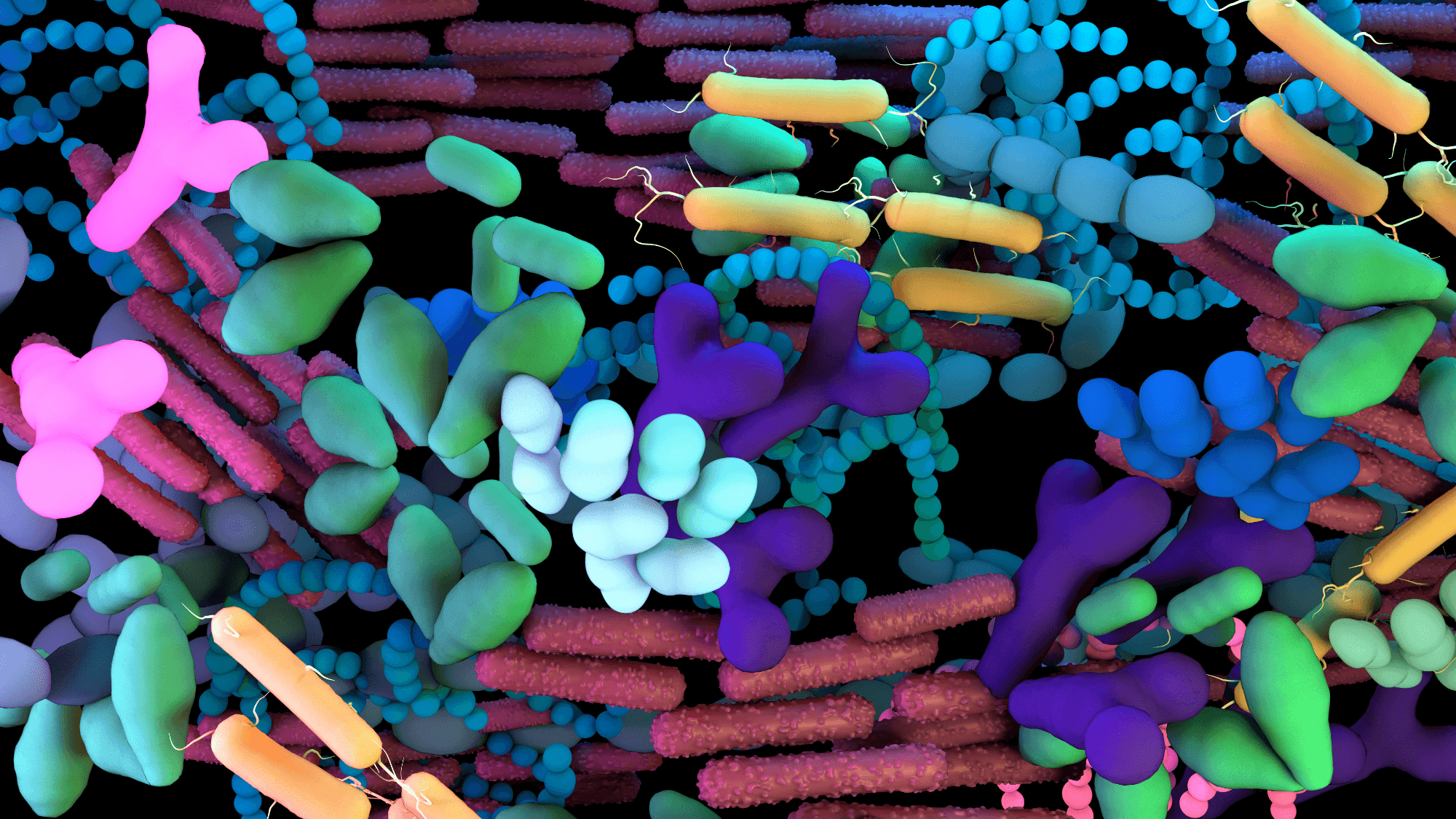Engineered Human Therapies
$1.9 Million NIH Grant for Penn State to Explore the Human Microbiome-Health Connection with Machine Learning
This week, the National Institutes of Health’s National Institute of General Medical Science granted a substantial 5-year, $1.9 million Maximizing Investigator’s Research Award to Jordan Bisanz.
Feb 6, 2024
Design Cells/Canva
It's now well known that the human microbiome—the collection of microorganisms that live in our bodies—have an impact on our overall health. What diseases we might be prone to, how we respond to our environment, and even how we react to medication can all be influenced by our microbiome. But so far, it’s unclear exactly how this occurs. And, of even greater interest, if we can understand the microbiome’s mechanism of action, can we then alter it to counter new threats to our health?
This week, the National Institutes of Health’s National Institute of General Medical Science granted a substantial 5-year, $1.9 million Maximizing Investigator’s Research Award to Jordan Bisanz, assistant professor of biochemistry and molecular biology in the Penn State Eberly College of Science.
Discussing the significance of this research, Bisanz remarked, “It is clear that the diversity of microbes in the human body is important, but why that diversity is important gets much murkier,” Bisanz said. “We plan to use a combination of computational and experimental biology to better understand the different species that make up a healthy human microbiome as well as how they work together to impact human health.”
The microbiome of an individual can host several hundred to a thousand different species residing within various parts of the body such as the digestive tract or skin. While many studies focus on cataloging these species and their abundance, Bisanz aims to delve deeper by employing machine learning and computational methods to analyze publicly available data, unraveling the complexities of a healthy microbial community.
“We plan to look at information from hundreds of people to identify the most common strains or combinations of strains in a healthy microbiome,” he said. “Then, we can essentially design a healthy microbiome and use that as a model system to understand how the community functions. This is a very different approach from how microbiology tends to be done.”
Moving beyond analysis, Bisanz and his team will construct laboratory models mimicking a healthy microbiome, utilizing microbial strains maintained in their lab. By doing so, they can investigate how these microbiomes respond under various conditions, including disease states, potentially paving the way for targeted therapies.
“It’s kind of like a cookbook of microbial communities, and we can decide what is practical for us to use to explore different questions,” he explained. “Ultimately, we hope to better identify the specific microbes and metabolic processes that are important for host-microbe interactions and how they impact disease risk.”
Moreover, Bisanz plans to investigate the impact of the microbiome on drug absorption, particularly focusing on orally administered antimalarial drugs known for their varied side effects. By understanding how microbes influence drug uptake, the research could lead to personalized medicine approaches in dosage selection.
“One of the questions from a personalized medicine standpoint is how to select the right dosage of a drug,” Bisanz noted. “You can imagine in a futuristic world, you might go to the doctor for a treatment and they could do a quick test. And maybe they would identify a genetic marker that indicates you absorb the drug more quickly than others and also identify that they have a microbe that is known to metabolize the drug, and that helps them set the dosage.”
Highlighting the broader implications of this research, Bisanz emphasized its potential to enhance our understanding of human health and physiology in relation to microbial communities.
“The microbiome is very responsive, and it can be modified quickly and easily using dietary manipulations, like probiotics,” he concluded. “It is a relatively young field, but it has promising and immediate translational applications.”


















